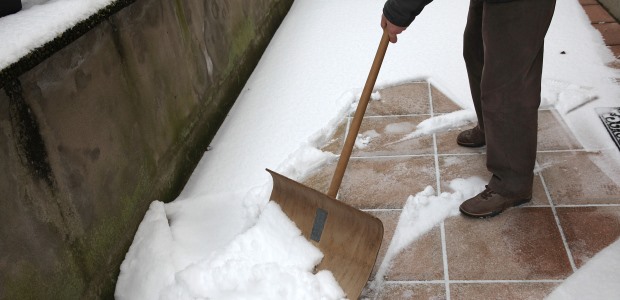
Get Ready for Winter's Challenges
Driving in winter is just one of the frequently hazardous tasks. Others include carbon monoxide exposure from using generators inside, shoveling snow and clearing roofs, fires, and slips and falls.
OSHA rightly points out that driving safety is a key concern in the upcoming winter season, recommending that employers ensure workers are properly trained for driving in wintry conditions. Winter frequently presents other hazards, as well, including carbon monoxide exposure from using generators inside, shoveling snow and clearing roofs, fires, and slips and falls.
The agency's helpful online page about winter hazards includes guidance for driving, stranded vehicles, snow shoveling and using powered equipment such as snow blowers, preventing slips on snow and ice, working near or repairing downed or damaged power lines, and removing downed trees.
"Although employers cannot control roadway conditions, they can promote safe driving behavior by ensuring workers: recognize the hazards of winter weather driving, for example, driving on snow/ice covered roads; are properly trained for driving in winter weather conditions; and are licensed (as applicable) for the vehicles they operate," OSHA advises. "Employers should set and enforce driver safety policies. Employers should also implement an effective maintenance program for all vehicles and mechanized equipment that workers are required to operate," adding that employers should ensure properly trained workers inspect their vehicles' brakes, tires, engine, and other other systems to ensure they are working properly. And it recommends having an emergency kit in vehicles with these items:
- Cellphone or two-way radio
- Windshield ice scraper
- Snow brush
- Flashlight with extra batteries
- Shovel
- Tow chain
- Traction aids (bag of sand or cat litter)
- Emergency flares
- Jumper cables
- Snacks
- Water
- Road maps
- Blankets, change of clothes
Workers shoveling snow may experience exhaustion, dehydration, back injuries, or heart attacks. They should warm up before the activity, scoop small amounts of snow at a time and push the snow rather than lifting it. "The use of proper lifting technique is necessary to avoid back and other injuries when shoveling snow: keep the back straight, lift with the legs and do not turn or twist the body," the agency advises, recommending that workers make sure powered equipment, such as snow blowers, is properly grounded to protect them from electric shocks or electrocutions.
As for clearing snow from roofs and working at heights, OSHA says employers must evaluate snow removal tasks for hazards and plan how to do the work safely and can protect workers from hazardous work conditions by using snow removal methods that do not involve workers going on roofs at all. Employers should determine the right type of equipment and PPE (personal fall arrest systems, non-slip safety boots, etc.) for the job and ensure that workers are trained on how to use them properly.
To prevent slips and falls on snow and ice, employers should clear walking surfaces of snow and ice and spread deicer as soon as possible after a winter storm. Wearing proper footwear is essential for walking on snow or ice; OSHA notes that a "pair of insulated and water resistant boots with good rubber treads is a must for walking during or after a winter storm. Keeping a pair of rubber over-shoes with good treads which fit over your street shoes is a good idea during the winter months. Take short steps and walk at a slower pace so you can react quickly to a change in traction, when walking on an icy or snow-covered walkway."
The U.S. Fire Administration, a unit of FEMA, points out that half of all home heating fires occur in December, January, and February. It reminds employers and workers to keep portable generators outside, away from windows, and to keep anything that can burn at least 3 feet away from any heat source (fireplace, wood stove, radiator, or space heater).